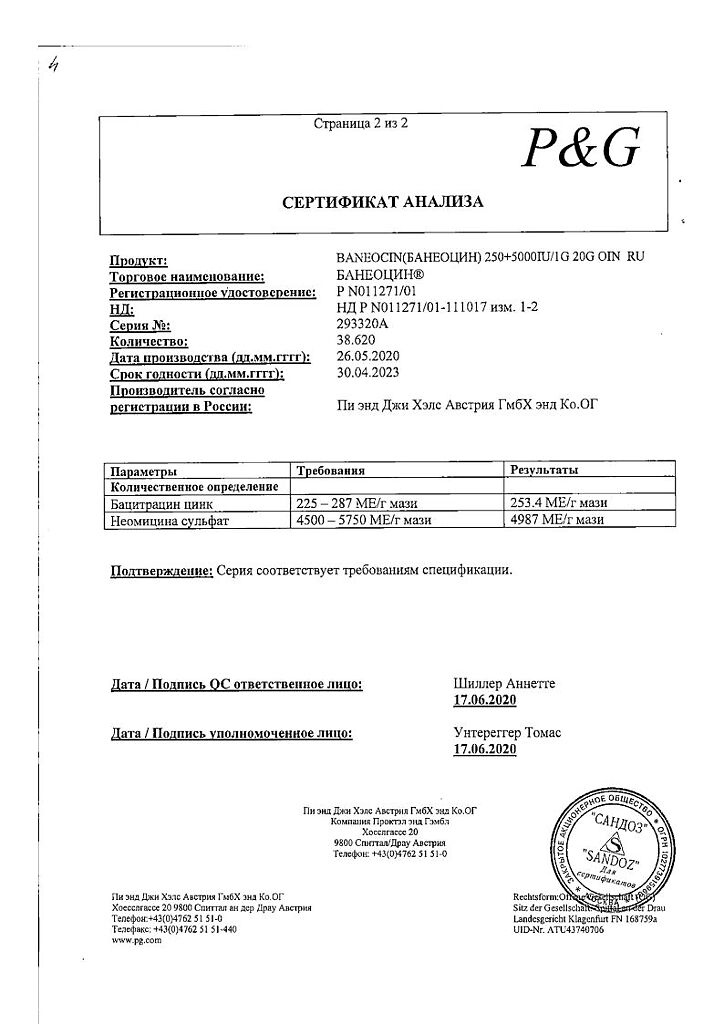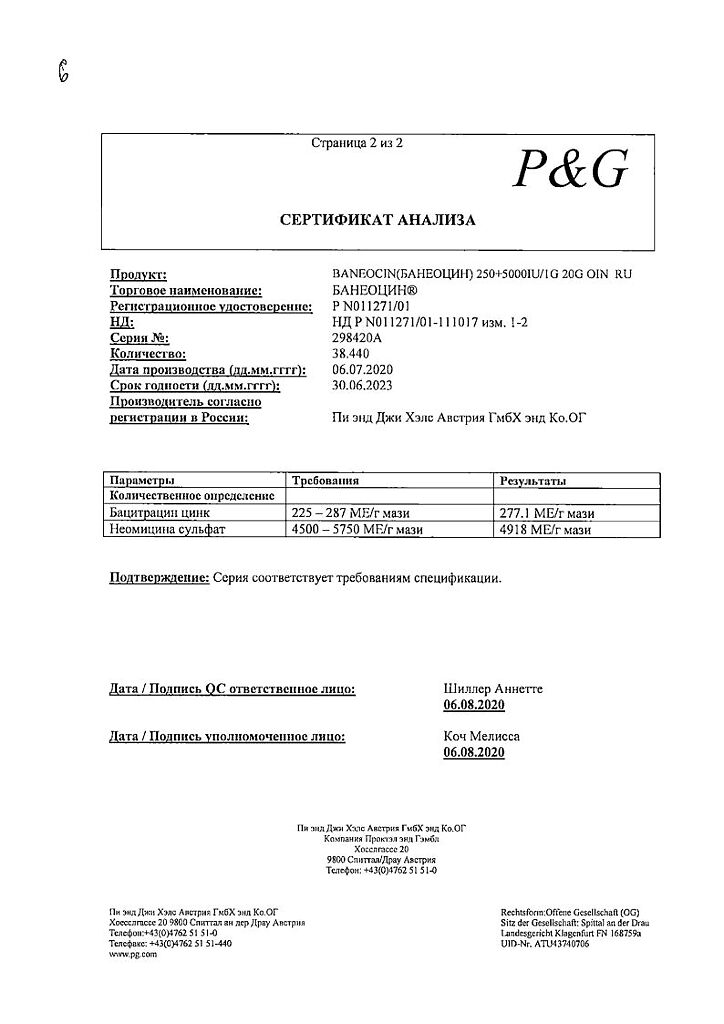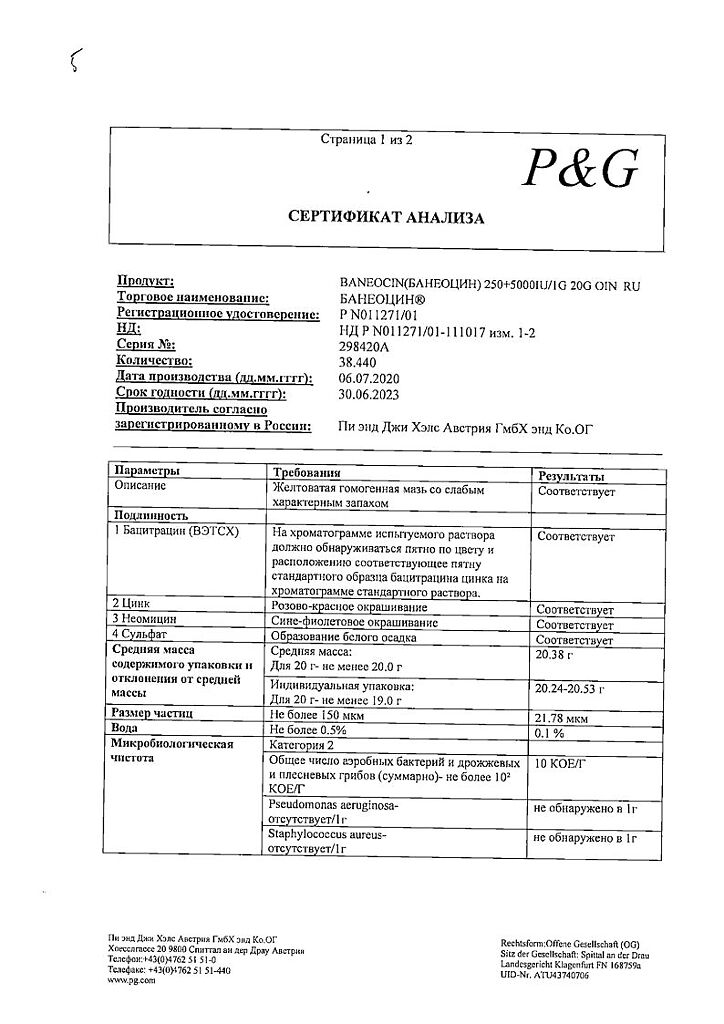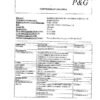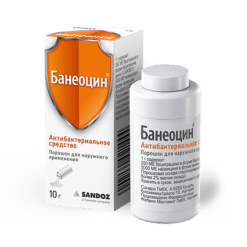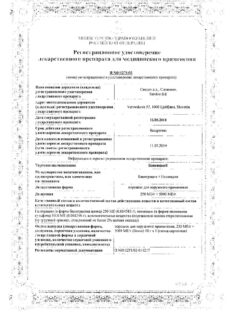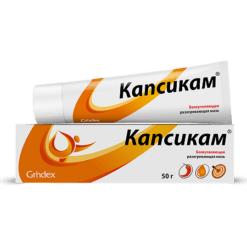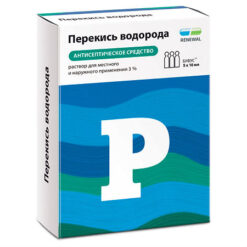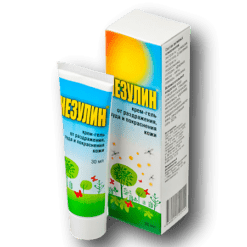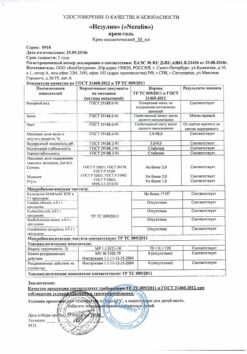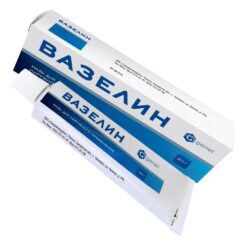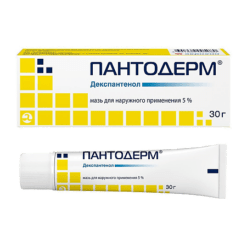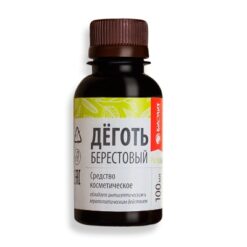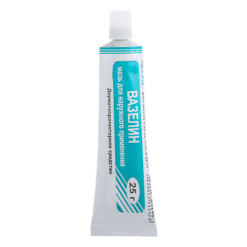No products in the cart.
Baneocin, ointment 250 me/g+5000 me/g 20 g
€1.00
Out of stock
(E-mail when Stock is available)
Description
Pharmacodynamics
Baneocin is a combined antibacterial drug for topical use.
Baneocin contains two bactericidal antibiotics: neomycin and bacitracin.
Bacitracin is a polypeptide antibiotic that inhibits the synthesis of the bacterial cell membrane.
Neomycin is an aminoglycoside antibiotic that inhibits bacterial protein synthesis.
Bacitracin is active against Gram-positive microorganisms such as beta-haemolytic streptococci, staphylococci, and some Gram-negative pathogens. Resistance to bacitracin is extremely rare.
Neomycin is effective against Gram-positive and Gram-negative microorganisms.
The combination of the two agents has achieved a broad spectrum of the drug and synergistic action against a number of microorganisms, such as Staphylococcus aureus.
Pharmacokinetics
The active ingredients are generally not absorbed (even by damaged skin), but high concentrations are present in the skin.
Baneocin is well tolerated. Tissue tolerance is rated as excellent, no inactivation by biological products, blood and tissue components has been noted. If the drug is applied to large areas of skin lesions, the possibility of absorption of the drug and its consequences must be taken into account.
Indications
Indications
Baneocin is indicated for use in infections caused by microorganisms sensitive to neomycin and/or bacitracin.
bacterial skin infections of limited prevalence, for example with weeping contagious impetigo, infected trophic ulcers of the lower extremities, infected eczema, bacterial diaper dermatitis, bacterial complications (Herpes simplex and Herpes zoster, or varicella vesicles);
prevention of umbilical infection in newborns;
prevention of infection after surgical (dermatological) procedures – Baneocin powder can be used for additional treatment in the postoperative period (after excision, cauterization, episiotomy, for the treatment of cracks in the skin, weeping wounds and sutures).
Pharmacological effect
Pharmacological effect
Pharmacodynamics
Baneocin is a combined antibacterial drug intended for topical use.
Baneocin contains two bactericidal antibiotics: neomycin and bacitracin.
Bacitracin is a polypeptide antibiotic that inhibits the synthesis of bacterial cell walls.
Neomycin is an aminoglycoside antibiotic that inhibits bacterial protein synthesis.
Bacitracin is active against gram-positive microorganisms such as beta-hemolytic streptococci, staphylococci, and some gram-negative pathogens. Resistance to bacitracin is extremely rare.
Neomycin is effective against gram-positive and gram-negative microorganisms.
Thanks to the use of a combination of these two substances, a wide spectrum of action of the drug and synergistic action against a number of microorganisms, such as staphylococci, are achieved.
Pharmacokinetics
The active substances, as a rule, are not absorbed (even by damaged skin), however, they are present in high concentrations in the skin.
Baneocin is well tolerated. Tissue tolerance is assessed as excellent; inactivation by biological products, blood and tissue components is not observed. If the drug is applied to large areas of skin lesions, the possibility of absorption of the drug and its consequences should be taken into account.
Special instructions
Special instructions
When used in doses significantly higher than recommended, due to the possible absorption of the drug Baneocin, special attention should be paid to symptoms indicating nephro- and/or ototoxic reactions.
Since the risk of toxic effects increases with decreased liver and/or kidney function, blood and urine tests together with audiometric testing should be performed in patients with hepatic and/or renal insufficiency before and during therapy with Baneocin.
If absorption of Baneocin occurs, attention should be paid to potential blockade of neuromuscular conduction, especially in patients with acidosis, concomitant myasthenia gravis or other neuromuscular diseases.
During long-term treatment, attention should be paid to the possible growth of resistant microorganisms. In such situations, appropriate treatment should be prescribed.
In case of using the drug in children, patients with impaired liver and kidney function, as well as with a large area of the treated surface, long-term use and deep skin lesions, it is recommended to first consult a doctor.
For patients who develop an allergy or superinfection, the drug should be discontinued.
Active ingredient
Active ingredient
Bacitracin, Neomycin
Composition
Composition
1 g ointment contains:
Active ingredients: bacitracin (in the form of bacitracin zinc) – 250 IU; neomycin (in the form of neomycin sulfate) – 5000 IU.
Excipients: lanolin, white soft paraffin
Pregnancy
Pregnancy
The use of Baneocin during pregnancy and breastfeeding is possible only after consultation with a doctor if the expected benefit to the mother outweighs the potential risk to the fetus and infant.
Contraindications
Contraindications
hypersensitivity to bacitracin and/or neomycin, or to other aminoglycoside antibiotics;
extensive skin lesions, since absorption of the drug can cause an ototoxic effect accompanied by hearing loss;
severe disturbances in excretory function due to heart or renal failure and existing lesions of the vestibular and cochlear systems in cases where absorption of the drug is possible.
With caution:
if absorption is possible (extensive damage to the integrity of the skin), it is necessary to monitor the possible appearance of signs of neuromuscular blockade, especially in patients with acidosis, myasthenia gravis or other neuromuscular diseases. If neuromuscular blockade develops, calcium supplements or neostigmine are indicated;
with long-term use of the drug, it is necessary to monitor the possible excessive growth of resistant organisms. If this occurs, appropriate treatment should be prescribed;
Treatment with Baneocin in patients who develop allergic reactions or superinfection should be discontinued.
Side Effects
Side Effects
When applied topically to the skin, mucous membranes and wound surfaces, Baneocin is usually well tolerated.
Patients who use the drug for a long time may develop allergic reactions in the form of redness and dryness of the skin, skin rashes and itching.
Allergic reactions mainly occur as contact eczema and are rare. In approximately 50% of cases they are associated with cross-allergy to other aminoglycoside antibiotics.
When treating patients with extensive skin lesions, it is necessary to take into account the possibility of absorption of the drug and, as a result, the occurrence of complications such as damage to the vestibular and cochlear apparatus, nephrotoxic effect and blockade of neuromuscular conduction.
Interaction
Interaction
If systemic absorption occurs, concomitant use of cephalosporins or aminoglycoside antibiotics may increase the likelihood of a nephrotoxic reaction.
Concomitant use of diuretics such as ethacrynic acid or furosemide with Baneocin can provoke oto- and nephrotoxic effects.
Absorption of the drug Baneocin can potentiate the effects of blockade of neuromuscular conduction in patients receiving narcotics, anesthetics and muscle relaxants.
There were no cases of incompatibility between bacitracin and neomycin.
Overdose
Overdose
When used in doses significantly higher than recommended, especially in the treatment of (neuro)trophic ulcers, nephro- and/or ototoxic reactions may occur due to possible absorption of active components.
Storage conditions
Storage conditions
At temperatures below 25 °C
Shelf life
Shelf life
3 years
Manufacturer
Manufacturer
Salutas Pharma GmbH, Germany
Additional information
| Shelf life | 3 years |
|---|---|
| Conditions of storage | At temperatures below 25 °C |
| Manufacturer | Merck KGaA & Co, Austria |
| Medication form | topical ointment |
| Brand | Merck KGaA & Co |
Other forms…
Related products
Buy Baneocin, ointment 250 me/g+5000 me/g 20 g with delivery to USA, UK, Europe and over 120 other countries.


